

Krishna Janambhoomi Mandir, one of India’s most revered temples, is thought to be the location of Lord Krishna’s birth. The temple is significant not just from a religious standpoint but also historically since King Kans, Lord Krishna’s maternal uncle, was imprisoned there in a cell. King Kans’ brutality toward the parents of Lord Krishna is symbolised by the stone-walled cell. When visiting the temple, which is a popular pilgrimage destination in India, pilgrims are advised to dress modestly. Let’s start 5 Days Mathura Vrindavan Tour.
One of the oldest and most well-known Hindu sanctuaries in Mathura is Shri Dwarkadhish Temple, which is situated near the northern boundary. The shrine is devoted to Lord Dwarkanath, a manifestation of Lord Krishna who reigned over Dwarka (hence the name Dwarkadheesh). The black marble idol has been expertly sculpted. Seth Gokuldas Parikh, the wealthy Gwalior province treasurer, built the shrine in 1815. The temple, one of the most revered locations in the city, is also a work of art in architecture, with huge pillars and vibrant floral patterns. While visiting the shrine, devotees are advised to dress modestly. Let’s start 5 Days Mathura Vrindavan Tour.
Vishram Ghat is considered a sacred spot for pilgrims and devotees who visit Mathura. Taking a dip in the holy waters of the Yamuna River at this ghat is believed to cleanse one’s sins and grant spiritual purification. Devotees also offer prayers, light lamps, and perform rituals on the ghat’s steps.
The ghat is known for its vibrant and festive atmosphere, particularly during important Hindu festivals like Janmashtami (the birth anniversary of Lord Krishna) and Holi (the festival of colors). During these occasions, the ghat is beautifully decorated, and devotional activities, cultural performances, and processions are organized. Let’s start 5 Days Mathura Vrindavan Tour.
Vishram Ghat is also famous for the evening aarti (ritual worship) that takes place at sunset. Devotees gather to witness the aarti, during which lamps are lit, hymns are sung, and prayers are offered to Lord Krishna. The sight of the illuminated lamps floating in the Yamuna River creates a mesmerizing and divine ambiance.
Devotees visit Keshavdevji Temple to offer prayers, seek blessings, and express their devotion to Lord Krishna. The temple complex also includes other shrines dedicated to various deities associated with Lord Krishna’s life, such as Radha, Balarama, and other companions. Let’s start 5 Days Mathura Vrindavan Tour.
The temple premises are often bustling with devotees, especially during festivals like Janmashtami, the birth anniversary of Lord Krishna, when elaborate celebrations and religious ceremonies take place. The atmosphere is filled with devotional fervor, chanting of hymns, and the sound of bells. Let’s start 5 Days Mathura Vrindavan Tour.
Visiting Keshavdevji Temple provides devotees with an opportunity to connect with the divine and experience the spiritual aura associated with Lord Krishna’s birthplace. It is a place where followers of Lord Krishna can express their love and devotion and immerse themselves in the divine atmosphere. Let’s start 5 Days Mathura Vrindavan Tour.
According to Hindu mythology, Kansa was a powerful and oppressive king who ruled Mathura. It is believed that Kansa resided in the fort and it was from here that he orchestrated various plots against Lord Krishna, who was destined to be his downfall.
The exact location and remains of Kans Quila are not well-defined, and different sources mention various possibilities for its existence. Some accounts suggest that it was located near the Krishna Janambhoomi complex, while others mention it being situated in different parts of Mathura. Let’s start 5 Days Mathura Vrindavan Tour.
Visiting Mathura provides an opportunity to immerse oneself in the spiritual heritage and mythology of Lord Krishna. The city holds great importance for devotees and tourists interested in exploring the cultural and religious significance of Krishna’s birthplace. Let’s start 5 Days Mathura Vrindavan Tour.
One of the prominent locations for the Yamunaji Aarti in Mathura is Vishram Ghat. This ghat, located on the banks of the Yamuna, witnesses a large gathering of devotees during the aarti. The rhythmic chanting of hymns, the fragrance of incense, and the resonance of bells create a divine ambiance. Let’s start 5 Days Mathura Vrindavan Tour.
The exact timing of the Yamunaji Aarti in Mathura may vary, but it typically takes place during the evening, around sunset. Devotees gather near the riverbank and participate in the aarti ceremony, expressing their devotion to Yamunaji and seeking her blessings. Let’s start 5 Days Mathura Vrindavan Tour.
The name “84 Khamba” refers to the 84 pillars that once stood at the site. These pillars were said to have supported a grand hall where Lord Krishna and Balarama played and interacted with their friends and cowherd companions.
The 84 Khamba is associated with several stories and incidents from Lord Krishna’s life, including his interactions with the gopis (cowherd girls) and the famous Raas Leela (divine dance) with Radha and the gopis.
Today, the original 84 pillars may not be present, but the site remains a place of pilgrimage and devotion. Devotees and visitors come to 84 Khamba to pay their respects, offer prayers, and immerse themselves in the spiritual ambiance. Let’s start 5 Days Mathura Vrindavan Tour. associated with Lord Krishna’s pastimes.
Raman Reti is an expansive area covered with sand, which is said to have preserved the footprints of Lord Krishna. Devotees and pilgrims visit this site to offer their prayers, meditate, and immerse themselves in the divine presence associated with Lord Krishna’s leelas. Let’s start 5 Days Mathura Vrindavan Tour.
The area of Raman Reti is considered sacred and spiritually charged. It is believed that walking on the sands of Raman Reti can bestow spiritual benefits and help one experience a connection with Lord Krishna. Let’s start 5 Days Mathura Vrindavan Tour.
Raman Reti is also home to several temples dedicated to Lord Krishna and other deities. The temples provide a focal point for devotion and worship, attracting devotees who come to seek blessings and participate in spiritual activities.
Brahmand Ghat is the spot where infant Krishna, after swallowing a few mud particles while playing with his friends, had apparently revealed the entire cosmic universe in his mouth, much to the bewilderment of his foster mother Yashoda. Hence the name of the site is Brahmand Ghat, literally meaning, the universe. Besides the mystical swirl of stories resounding in the environs of this quaint little town, Brahmand Ghat has an old temple overlooking the serene River Yamuna along with the most striking ‘Braj Ki Raj’―literally, the mud of Braj, which attracts pilgrim visitors today. Let’s start 5 Days Mathura Vrindavan Tour.
The temple is dedicated to Lord Shiva and holds religious significance for devotees.
The name “Chintaharan Mahadev” translates to “the deity who relieves worries and anxieties.” It is believed that worshipping Lord Shiva at this temple can alleviate one’s troubles and provide mental peace and solace.
The temple is associated with a legend from Hindu mythology. According to the legend, Lord Krishna’s foster mother, Yashoda, once expressed her worries and concerns about Lord Krishna’s safety to him. In response, Lord Krishna reassured her by saying that praying to Chintaharan Mahadev would alleviate all her worries. Thus, the temple came to be known as Chintaharan Mahadev. Let’s start 5 Days Mathura Vrindavan Tour.
Raskhan, also known as Sheikh Imam Baksh Nasikh, was a 16th-century poet and saint who composed many verses expressing his deep love and devotion for Lord Krishna. His works are considered significant in the Bhakti movement and have inspired countless devotees over the centuries.
The Raskhan Samadhi is a place where Raskhan is believed to have attained his final resting place or samadhi. It is a pilgrimage site for followers of Raskhan’s poetry and those who admire his devotion to Lord Krishna. Let’s start 5 Days Mathura Vrindavan Tour.
Devotees and visitors come to Raskhan Samadhi to pay their respects and honor the legacy of Raskhan. The site may include a memorial structure or shrine dedicated to Raskhan, where his teachings and contributions to spiritual literature are remembered.
Thakurani Ghat is associated with Lord Krishna’s childhood pastimes and is believed to be a place where he used to play and interact with his friends and cowherd companions. The ghat is named after Thakurani, which is another name for Radha, the beloved consort of Lord Krishna.
The ghat serves as a place for devotees to take holy dips in the Yamuna River, perform rituals, and offer prayers. It is considered auspicious to bathe in the river at Thakurani Ghat, as it is believed to purify the soul and bring spiritual blessings.
Devotees often gather at Thakurani Ghat to perform aarti (devotional ritual) to the Yamuna River and offer prayers to Radha and Krishna. The aarti ceremony involves the lighting of lamps, singing of hymns, and expressing devotion and gratitude to the divine couple.
Birla Mandir, also known as Shri Rang Nath Ji Temple, is a famous Hindu temple located in Vrindavan, Uttar Pradesh, India. It is one of the prominent temples in Vrindavan and attracts devotees and tourists from all over the world.
The temple is dedicated to Lord Krishna, who is worshipped in the form of Lord Ranganatha. It was built by the Birla family, a renowned business family in India known for their philanthropy and contribution to various temples and cultural institutions.
The architecture of Birla Mandir is inspired by the traditional Nagara style of temple architecture. The temple complex is spacious and well-maintained, with beautifully carved pillars and intricate designs. The main deity, Lord Ranganatha, is adorned with elaborate decorations and jewelry.
The temple also houses several other deities, including Radha Krishna, Lord Ganesha, Lord Shiva, and Goddess Lakshmi. Devotees can offer prayers, participate in the daily rituals and aartis, and seek blessings from the divine deities.
Pagal Baba Mandir, also known as Shri Pagal Baba Mandir, is a popular temple located in Vrindavan, Uttar Pradesh, India. It is dedicated to Lord Krishna and is named after the saint Pagal Baba, who was known for his intense devotion to Lord Krishna.
The Pagal Baba Mandir features a large hall with a sanctum at the center, where the idol of Lord Krishna is enshrined. The idol is beautifully adorned and attracts devotees who come to offer their prayers and seek blessings.
What makes the temple distinctive is its colorful and vibrant decor. The walls and ceilings are adorned with intricate paintings depicting scenes from Lord Krishna’s life and various Hindu mythological stories. The temple complex also includes smaller shrines dedicated to other deities like Radha, Lord Shiva, and Goddess Durga.
Devotees can participate in the daily rituals, aartis, and bhajans (devotional songs) that are performed in the temple. The atmosphere is filled with devotion and spiritual fervor, creating a serene and uplifting experience for visitors.
This temple of Shri Krishna Pranami Paramdham in Vrindavan, is famous in the Braj region under the name of Kanch Ka Mandir. Kanch Mandir is also known as Glass Temple in English language.
The walls of the halls of the temple bear artistic images of famous temples of the Pranami sampradaya, which inspire the devotees to learn about the Pranami sampradaya. As such, the temple is decorated in the style of all other pranami temples. But glass and shining stones have been used so beautifully in this pranami temple of Vrindavan, that the devotees do not feel like coming out of the temple’s worship hall. The temple is named after the Glass Temple due to its attractive use of glass and shining stones.
The number of temples under Shri Krishna Pranami Paramdham in India is more than 200+, Delhi also has 5 famous temples of Shri Pranami community. Shri 5 Navatanpuri Dham, established in the city of Jamnagar in Madhya Pradesh, is the main center of all the institutions of the Shri Krishna Pranami community i.e. Acharyapith.
Sri Rangji Temple or Rangnath ji Temple is one of the largest and the only temple built in Dravidian style in Vrindavan.
Vrindavan has always been the centre of faith and devotion because of its association with Lord Krishna and Radha Rani. This devotion has been the driving force behind the construction of temples throughout history.
Shree Rang ji Temple is the largest temple of Vrindavan which was built in 1851 in the Dravidian style (which is replication of Srivilliputhur) and dedicated to Lord Ranganatha or also known as Rangji which depict Lord Vishnu. In this temple, Lord Vishnu is in his sheshashayi pose and resting on the large coils of the sacred Sesha Naga. Not only Lord Vishnu, but in this temple one can worship Lord Narasimha, Goddess Sita, Lord Rama and Lord Laksman, Lord Venugopala and Lord Ramanujacarya. Here the main priest is south Indian brahmans. In this temple, non-Hindus cannot enter where deity is located. Non-Hindu can only enter till courtyard and non-Indian can enter only till first two gateways. On the second gateway there is moving diorama which exhibits for Rs 1.
Banke Bihari Mandir is one of the most famous and revered temples in Vrindavan, Uttar Pradesh, India. It is dedicated to Lord Krishna, who is lovingly worshipped in the form of Banke Bihari.
The temple is located in the heart of Vrindavan and attracts a large number of devotees from all over the world. It is known for its unique devotional practices, lively atmosphere, and the divine presence of Lord Krishna.
The deity of Lord Banke Bihari in the temple is considered to be self-manifested, meaning it appeared on its own accord without human sculpting. The idol of Lord Krishna is in a standing posture, with his arms crossed and a mischievous smile on his face. The temple priests dress the deity in elaborate outfits and jewelry, and the idol is known for its playful and captivating expressions.
Devotees flock to Banke Bihari Mandir to offer their prayers, seek blessings, and engage in devotional activities. The atmosphere is filled with the chanting of sacred mantras, bhajans (devotional songs), and the sound of temple bells. The aarti (ritual of offering light) performed in the temple is a major attraction, drawing large crowds.
ISCON Temple in Vrindavan, also known as the Sri Krishna-Balaram Mandir, is a prominent Hindu temple and an important spiritual center. It is affiliated with the International Society for Krishna Consciousness (ISKCON), which is a worldwide organization dedicated to the teachings of Lord Krishna.
The ISCON Temple in Vrindavan is situated on the Bhaktivedanta Swami Marg and was built in 1975. It is dedicated to Lord Krishna and his divine brother Balarama. The temple complex is expansive and beautifully designed, with intricate architecture and ornate decorations.
The main deities worshiped in the temple are Lord Krishna and Balarama, who are believed to be the incarnations of Lord Vishnu. The idols are adorned with opulent clothing and jewelry. The temple also houses shrines dedicated to other deities such as Radha, Sita-Rama, and Chaitanya Mahaprabhu.
Radha Ballabh Temple is a renowned Hindu temple located in Vrindavan, Uttar Pradesh, India. It is dedicated to Lord Krishna and his beloved consort, Radha. The temple holds immense significance for devotees and is considered a sacred place of worship.
The Radha Ballabh Temple is known for its distinct architectural style, intricate carvings, and vibrant colors. It stands as a beautiful testament to the devotion and love for Radha and Krishna. The temple complex includes the main sanctum where the deities of Radha and Krishna are worshipped.
The unique feature of Radha Ballabh Temple is that it primarily focuses on the worship of Radha. The temple emphasizes the divine love and spiritual relationship between Radha and Krishna, portraying Radha as the supreme devotee and Krishna as the object of her unwavering affection.
Radha Damodar Temple is a famous temple located in Vrindavan, Uttar Pradesh, India. It holds great significance in the Vaishnavite tradition and is associated with the renowned saint and philosopher, Shri Jiva Goswami.
The Radha Damodar Temple is dedicated to Lord Krishna, specifically in the form of Damodar, and his eternal consort Radha. It is believed to have been established by Shri Jiva Goswami, a prominent disciple of Shri Chaitanya Mahaprabhu, in the 16th century.
The temple complex features a beautiful deity of Lord Damodar, also known as Shri Radha Damodar, along with the deities of Radha Rani and Lalita Sakhi. The deity of Damodar is especially significant, as it is said to have been personally carved by Shri Jiva Goswami himself.
According to the legends, Garuda had abandoned the entry of the poisonous Kaliya Naag in the Pacific Ocean. Due to this, he settled in the pious Yamuna river, to find solace from the atrocities of Garuda. His poison was polluting the river which was harming the people of Vrindavan. Shri Krishna with an intention to save his loved one’s ordered Kaliya naag to leave the Yamuna. When the poisonous snake did not follow his orders, Lord Krishna fiercely fought with him. This fight ended with the Lord dancing on the serpent’s venomous head. With every step Lord Krishna danced on the serpents head, his pride and self-image were vanishing. At the end when the serpent became selfless, lord Krishna guided him towards the ocean assuring him that Garuda won’t trouble him due the feet of Lord embarked on his head. Kaliya Dah Vrindavan is that place where Krishna wheedled out all the anguish from Kaliya Naag.
A temple town like none other, Vrindavan boasts of few of the best temples in Uttar Pradesh, adorned with exquisite craftsmanship and beautifully carved deities. With a throng of temples to visit in Mathura and Vrindavan, one of the most revered temples is the Vaishno Devi temple in Vrindavan.
Vaishno Devi is an incarnation of Devi, the Hindu Mother Goddess. She is also known as Trikuta, Ambe, Mata Rani, and Vaishnavi. The phrases “Maa” and “Mata” are frequently associated with Vaishno Devi. The combined powers of Parvati, Lakshmi, and Saraswati created Vaishno Devi. It is one of the best temples to visit in Vrindavan.
The historic Garud Govind temple is located in Vrindavan and has an exceptional beautiful statue of Krishna installed on a Garud (eagle). It takes us back to almost 5000 years. As per the mythology it says that the child Krishna was here and Chati Pujan ceremony was held here. One of the great lord’s friends would be the garuda and he would climb upon his shoulder.
Garudji bemused to see that noble Rama snarled in Naagpash by Meghnath. The doubt of Kaak-bhusundiji was cleared and his uncertainty and recommended him to go to this abode where young Krishna was playing. Garudji arrived here and proffered his expression of regret for the bafflement which he then had in Treta Yuga. Then Great Lord Krishna climbed upon Garudji. The other belief is that Sri Krishna gave his blessing to Kaliya the snake that within this place none of the snakes will ever have fear of the garuds. This is the reason as well why the Kaalsarp Pujan is also performed at the Garud Temple and not only from Vrindavan but people all over the country come here for this puja. This also has small water lake near the temple.
The Chandrodaya Temple is being developed by the International Society for Krishna Consciousness (ISKCON) and aims to showcase the teachings and life of Lord Krishna. The temple complex will include a main temple building, multiple shrines, exhibition halls, a cultural center, and various facilities for devotees and visitors.
The highlight of the Chandrodaya Temple will be the towering main temple, which is expected to reach a height of around 700 feet (213 meters). It will feature intricate architectural design and will serve as a visual representation of the divine abode of Lord Krishna, the spiritual world of Goloka Vrindavan.
One of the main highlights of Prem Mandir is its mesmerizing light and sound show that takes place in the evening. The temple is adorned with colorful LED lights, which illuminate the entire complex, creating a captivating visual spectacle. The light and sound show narrates the pastimes of Lord Krishna and provides a spiritual and immersive experience for the visitors.
Devotees and visitors can also participate in the daily aartis (devotional rituals), listen to bhajans (devotional songs), and engage in prayer and meditation within the serene environment of Prem Mandir. The temple attracts a large number of devotees and tourists throughout the year, who come to seek blessings and experience the divine love and devotion associated with Lord Krishna and Radha.
Fatehpur Sikri is a historical city located in the Agra district of the Indian state of Uttar Pradesh. It was founded by Emperor Akbar, the third Mughal Emperor, in 1569 and served as the capital of the Mughal Empire from 1571 to 1585. The city is situated about 35 kilometers (22 miles) west of Agra.
Fatehpur Sikri is renowned for its exceptional architecture, blending elements of Persian, Islamic, and Indian styles. The city was constructed primarily using red sandstone, giving it a distinct appearance. It served as a testament to Akbar’s vision and his efforts to promote religious harmony, as it housed structures representing various religions, including Islam, Hinduism, Christianity, and Jainism.
The Red Fort, also known as Lal Qila, is a historic fort located in Old Delhi, India. It was constructed by the Mughal Emperor Shah Jahan in the 17th century and served as the main residence of the Mughal emperors until 1857. The fort is an iconic symbol of India’s rich history and architectural grandeur.
The Red Fort gets its name from the red sandstone used in its construction. It spans over 250 acres and is surrounded by high walls, designed to provide protection and security. The fort complex is a blend of Persian, European, and Indian architectural styles.
The Taj Mahal is an iconic mausoleum located in Agra, Uttar Pradesh, India. It was built by the Mughal Emperor Shah Jahan in the 17th century as a memorial for his beloved wife, Mumtaz Mahal. The Taj Mahal is considered one of the most beautiful architectural wonders in the world and is recognized as a UNESCO World Heritage Site.
The Taj Mahal is renowned for its exquisite architecture and symmetrical design. It combines elements of Islamic, Persian, and Indian styles. The main structure is built with white marble, and the complex is surrounded by gardens and reflecting pools. The central dome is a prominent feature and is flanked by four minarets.
The Taj Mahal is not only a symbol of love but also a testament to the Mughal Empire’s architectural and artistic achievements. It is considered a masterpiece of Mughal architecture and has influenced countless structures worldwide.
The Tomb of Itimad-ud-Daulah, also known as the Baby Taj or Jewel Box, is a historic mausoleum located in Agra, Uttar Pradesh, India. It is often regarded as a precursor to the Taj Mahal and is considered a masterpiece of Mughal architecture. The tomb was built between 1622 and 1628 and is the final resting place of Mirza Ghiyas Beg, who was a nobleman and the grandfather of Mumtaz Mahal (the wife of Emperor Shah Jahan).
Mehtab Bagh, also known as the Moonlight Garden, is a historic garden complex located on the opposite bank of the Yamuna River from the Taj Mahal in Agra, Uttar Pradesh, India. It is situated to the north of the Taj Mahal complex and provides a panoramic view of the iconic mausoleum.
The garden complex spans over 25 acres and features walkways, lush green lawns, and symmetrical flowerbeds. The garden is aligned with a central axial pool that reflects the Taj Mahal, creating a stunning mirrored effect.
Visiting Mehtab Bagh provides a unique perspective on the Taj Mahal. It offers a quieter and less crowded setting compared to the main Taj Mahal complex, allowing visitors to appreciate the beauty of the mausoleum in a serene and tranquil atmosphere. The garden’s location and stunning views make it a popular destination for photography, leisurely walks, and enjoying the splendor of the Taj Mahal from a different vantage point.
Sikandra, or Sikandra Tomb, is a historical site located in the city of Agra, Uttar Pradesh, India. It is famous for housing the tomb of Emperor Akbar, the third Mughal Emperor of India. Sikandra is situated about 10 kilometers (6 miles) northwest of the Taj Mahal.
The main attraction at Sikandra is the tomb of Emperor Akbar, which is a magnificent mausoleum constructed in his honor. The tomb is a blend of various architectural styles, including Islamic, Hindu, and Persian influences. It features impressive red sandstone construction and intricate marble inlay work.
The tomb complex is encompassed by a charbagh, a traditional Persian-style garden layout. The garden is divided into four quadrants, symbolizing the Islamic concept of paradise. The pathways are aligned with fountains, water channels, and meticulously maintained greenery.
The Tomb of Akbar, also known as Akbar’s Mausoleum, is a grand mausoleum complex located in Sikandra, Agra, Uttar Pradesh, India. It is the final resting place of Emperor Akbar, the third Mughal Emperor of India, and is a significant architectural masterpiece of the Mughal era.
The tomb complex reflects a unique architectural style that combines elements of Islamic, Hindu, and Persian influences. It features a massive red sandstone structure with intricate marble inlay work. The mausoleum stands on a raised platform and is four-tiered, with each tier gradually receding in size. The topmost level is adorned with a marble pavilion, crowned by a dome.
The tomb holds historical significance as it represents the final resting place of Emperor Akbar, who was known for his progressive policies, religious tolerance, and cultural contributions. The tomb complex stands as a testimony to the grandeur and architectural achievements of the Mughal dynasty.
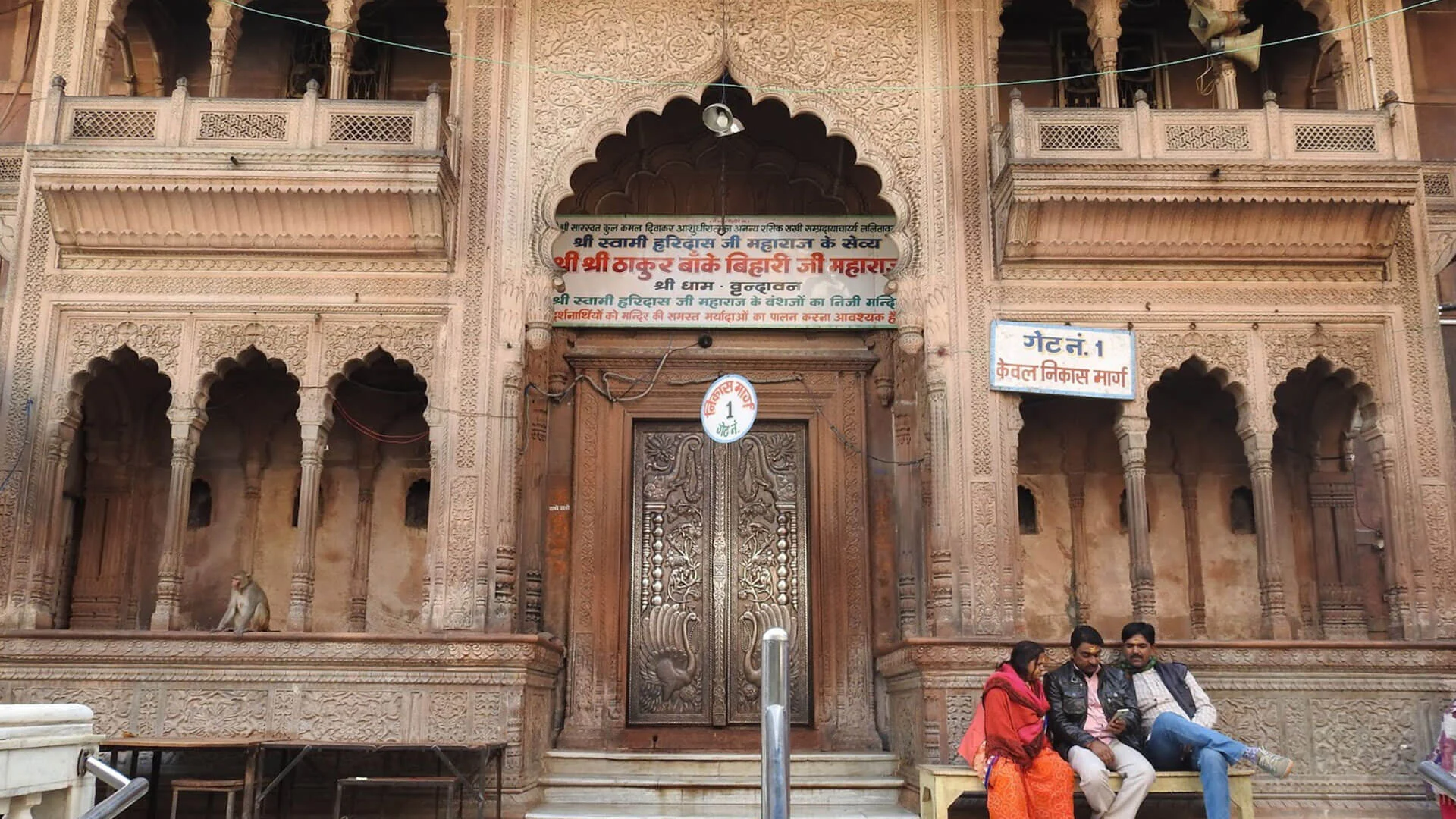
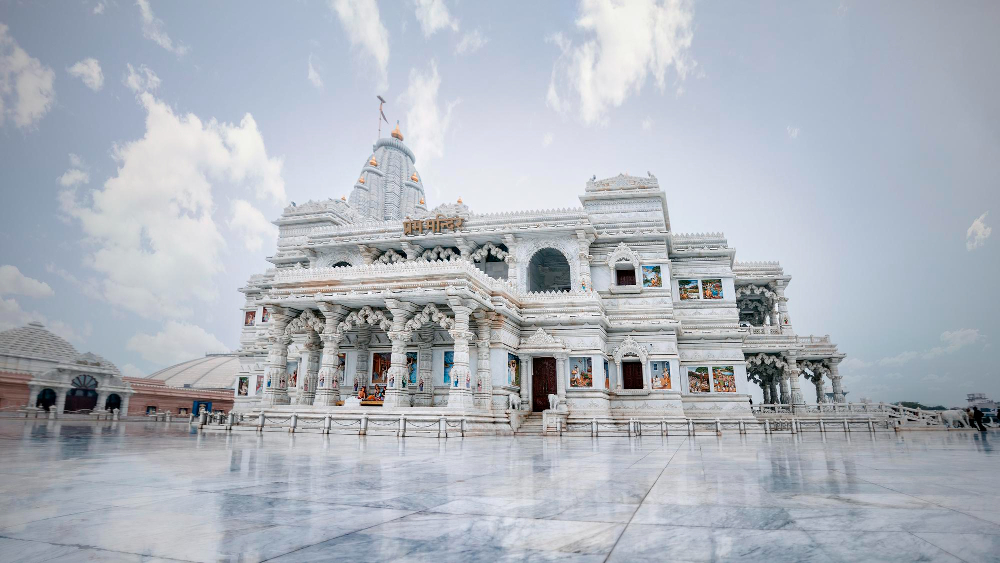
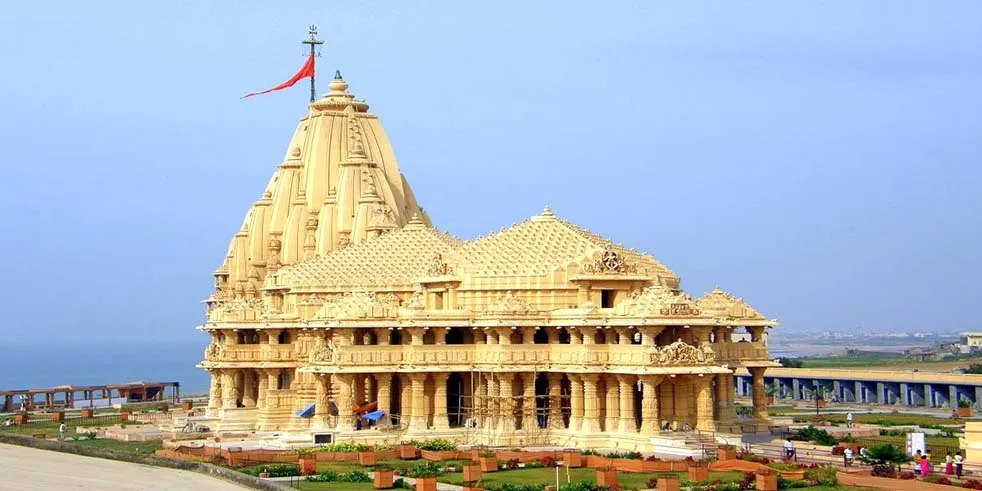
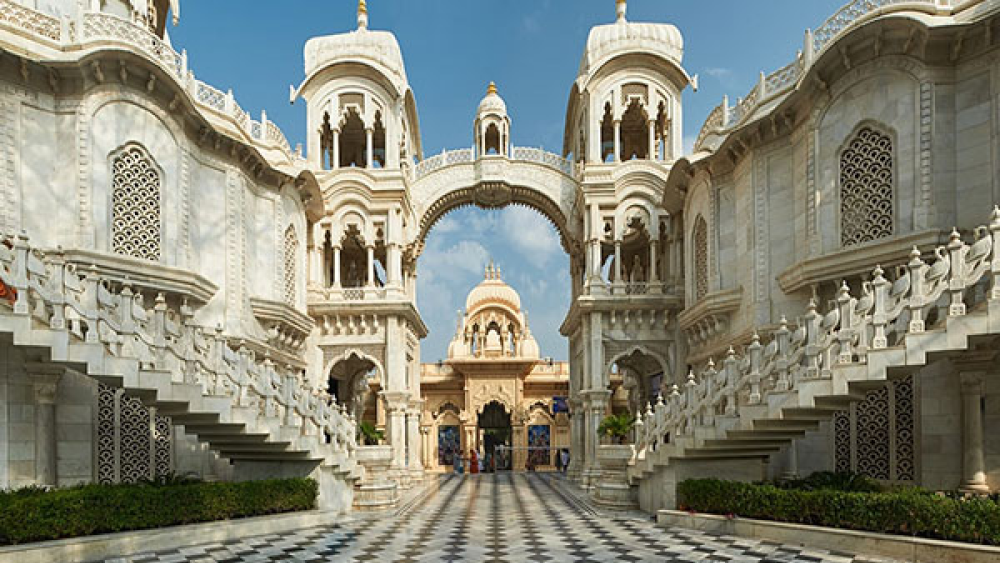
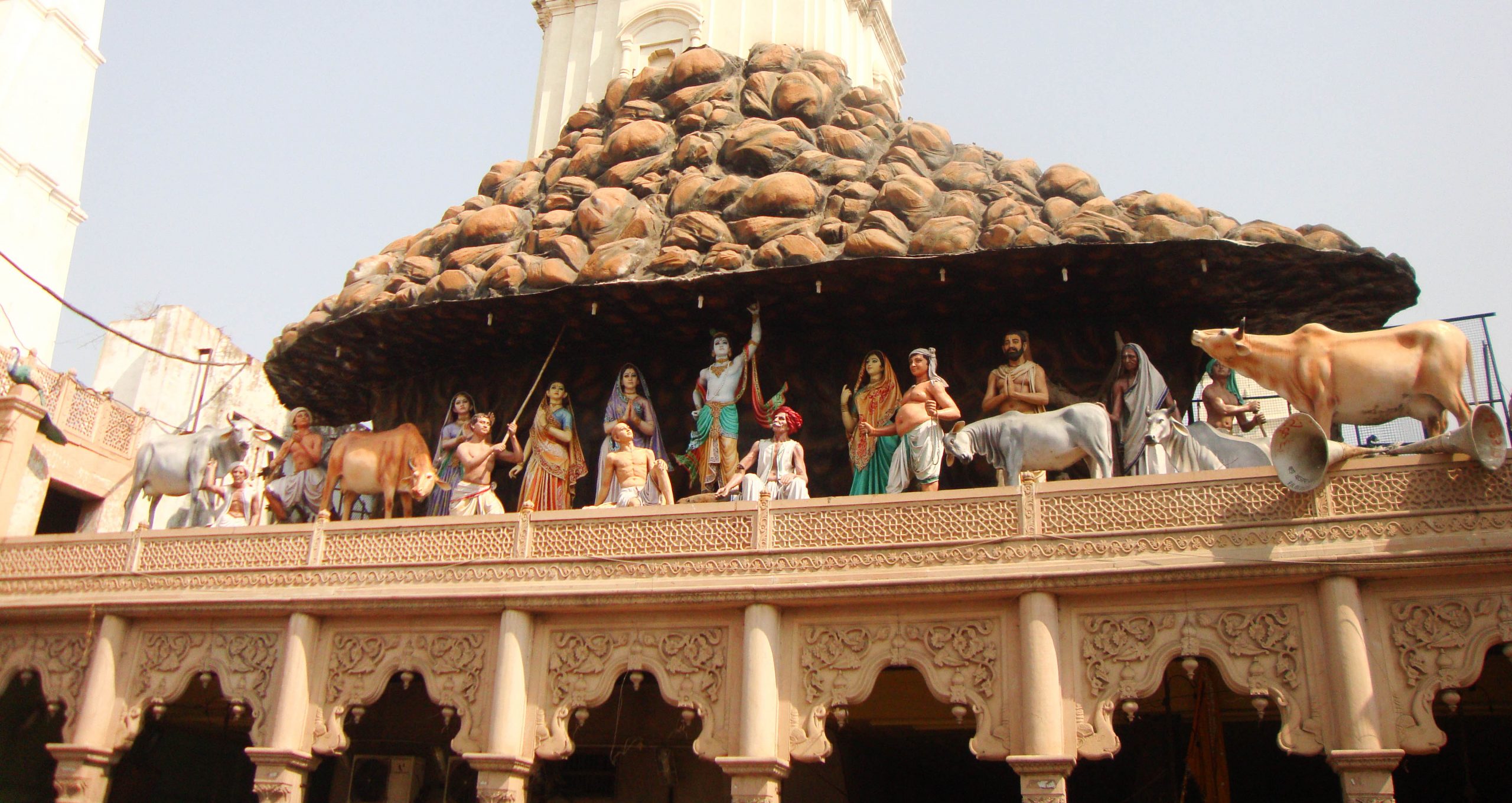
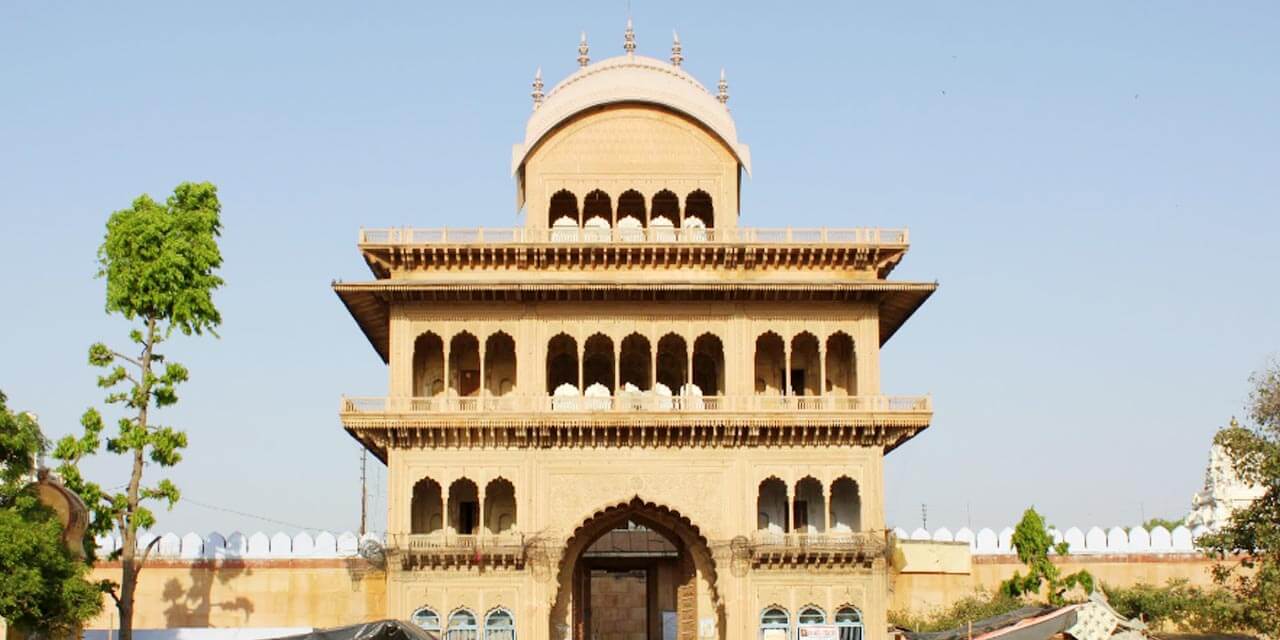
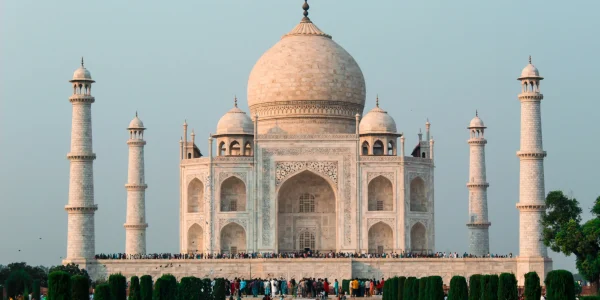
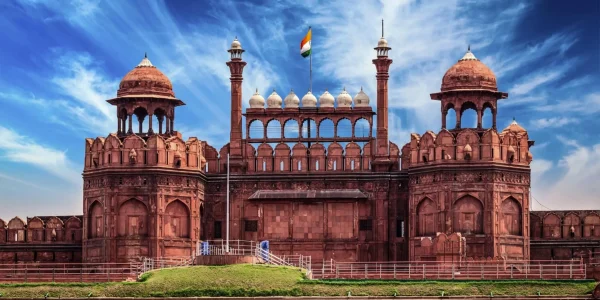

I absolutely loved the exceptional service provided by Team TourTripX during our Vrindavan tour. A heartfelt thank you to the entire team for making our journey memorable. Highly recommended! 🙏🏻✨
Ashish YadavAmazing service by Utkarsh and his team. Hassel free Journey. Very cooperative team. Superb and comfortable stay. Delicious food. Highly recommended TourTripX😊😊
Kirti JoshiWe recently had a Mathura, Vrindavan, Agra, Delhi, Kurushetra trip with TourTripX. On a very short notice the arrangements were done. Driver's are cooperative. Stays are really nice. Well planned. Highly Recommended.
Vijaya Kumari[contact-form-7 id="d44ec2e" title="Whatsapp Chat"]
Loved the way everything was handled from booking the ashram i wanted to the driver allocated, he was really nice . Thankyou so much for the awesome experience we had in Vrindavan and Mathura. Highly recommended !
Simran Karmakar